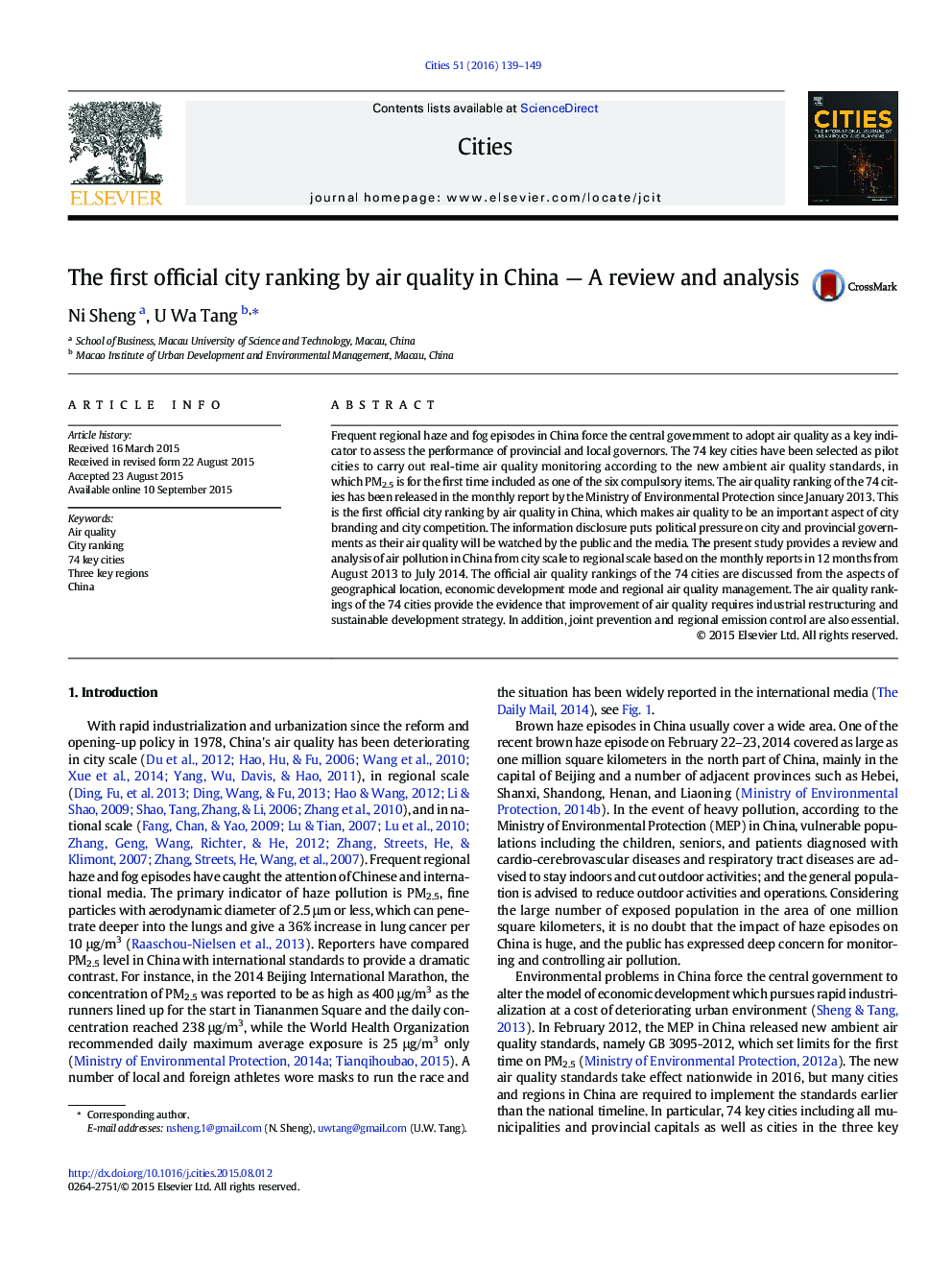| Article ID | Journal | Published Year | Pages | File Type |
|---|---|---|---|---|
| 7418397 | Cities | 2016 | 11 Pages |
Abstract
Frequent regional haze and fog episodes in China force the central government to adopt air quality as a key indicator to assess the performance of provincial and local governors. The 74 key cities have been selected as pilot cities to carry out real-time air quality monitoring according to the new ambient air quality standards, in which PM2.5 is for the first time included as one of the six compulsory items. The air quality ranking of the 74 cities has been released in the monthly report by the Ministry of Environmental Protection since January 2013. This is the first official city ranking by air quality in China, which makes air quality to be an important aspect of city branding and city competition. The information disclosure puts political pressure on city and provincial governments as their air quality will be watched by the public and the media. The present study provides a review and analysis of air pollution in China from city scale to regional scale based on the monthly reports in 12Â months from August 2013 to July 2014. The official air quality rankings of the 74 cities are discussed from the aspects of geographical location, economic development mode and regional air quality management. The air quality rankings of the 74 cities provide the evidence that improvement of air quality requires industrial restructuring and sustainable development strategy. In addition, joint prevention and regional emission control are also essential.
Keywords
Related Topics
Social Sciences and Humanities
Business, Management and Accounting
Tourism, Leisure and Hospitality Management
Authors
Ni Sheng, U Wa Tang,
